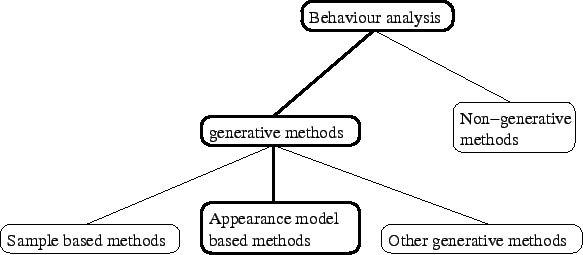 |
Behaviour from image sequences has been studied by several research groups. We can separate those studies into two main classes: the generative methods and the non-generative methods. The non-generative methods are used for recognition while the generative model can be used for both recognition and synthesis. The generative methods can be further separated into sample based methods, methods using appearance models and other generative methods. The sample based methods use frames from the original sequence to synthesise new sequences (the sequences can be video sequences or 3D skeleton sequences or any kind of sequences described in the following sections). A graphical tree representation of this classification is shown on figure 2.1. Our model can be classified as being in the appearance model based methods as denoted by the bold lines on the figure 2.1.
 |
The following sections describe the work related to ours for each class of method used.